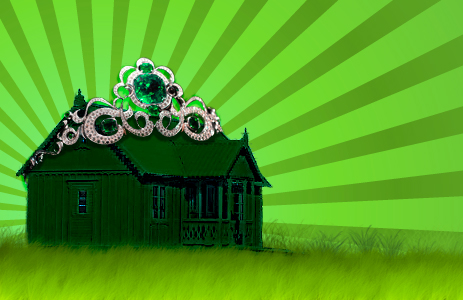
When it comes to home building, green is queen.
Cross-posted from Climate Progress.
With the construction industry still recovering in the U.S., companies offering “green” services may be able to set themselves apart and grow business faster, according to a survey conducted by McGraw Hill Construction.
In 2011, green builds in the residential sector made up 17 percent of construction, totaling $17 billion in economic activity. And the value of the residential green building market is expected to grow fivefold by 2016, taking up to 38 percent of the market and representing $87 billion to $114 billion.
McGraw Hill defines a green building as “one built to LEED standards, an equivalent green building certification program, or one that incorporates numerous green building elements across five category areas: energy efficiency, water efficiency, resource efficiency, responsible site management and improved indoor air quality.”
According to figures released by McGraw Hill, 46 percent of “conventional” homebuilders say that providing green design services makes it easier to find new work. And 71 percent of firms working exclusively in the green building space say that these services help set them apart in a struggling construction market.
Many factors are driving the green homes market, with “higher quality” and “increases in energy costs” topping the list, indicating that today’s green home buyer is not just a green consumer. Buyers recognize that green homes have lower bills due to higher building performance. The reported costs of building a green home have also gone down significantly. Builders report that the cost to go green is now 7 percent, as compared to 10 percent in 2008 and 11 percent in 2006.
While green is growing across the U.S., three regions are seeing higher than average growth. The West Coast has seen the highest green growth; the Midwest’s northern region, west of the Mississippi, is second highest; and New England ranks third.
The green remodeling market performed even better than new construction in 2011, with 62 percent of firms saying green services helped them increase work last year. Just over one-third of remodelers say they’ll be doing mostly green work by 2016.
This mirrors trends in the commercial sector, where LEED-certified retrofits surpassed new builds for the first time ever in 2011.
All this green-building activity translates into new jobs and new skills for existing workers. McGraw Hill reported in October that one-third of architects, engineers, and contractors in the U.S. — around 660,000 people — say they have “green” jobs. That number may climb to more than 900,000 jobs by 2015.



